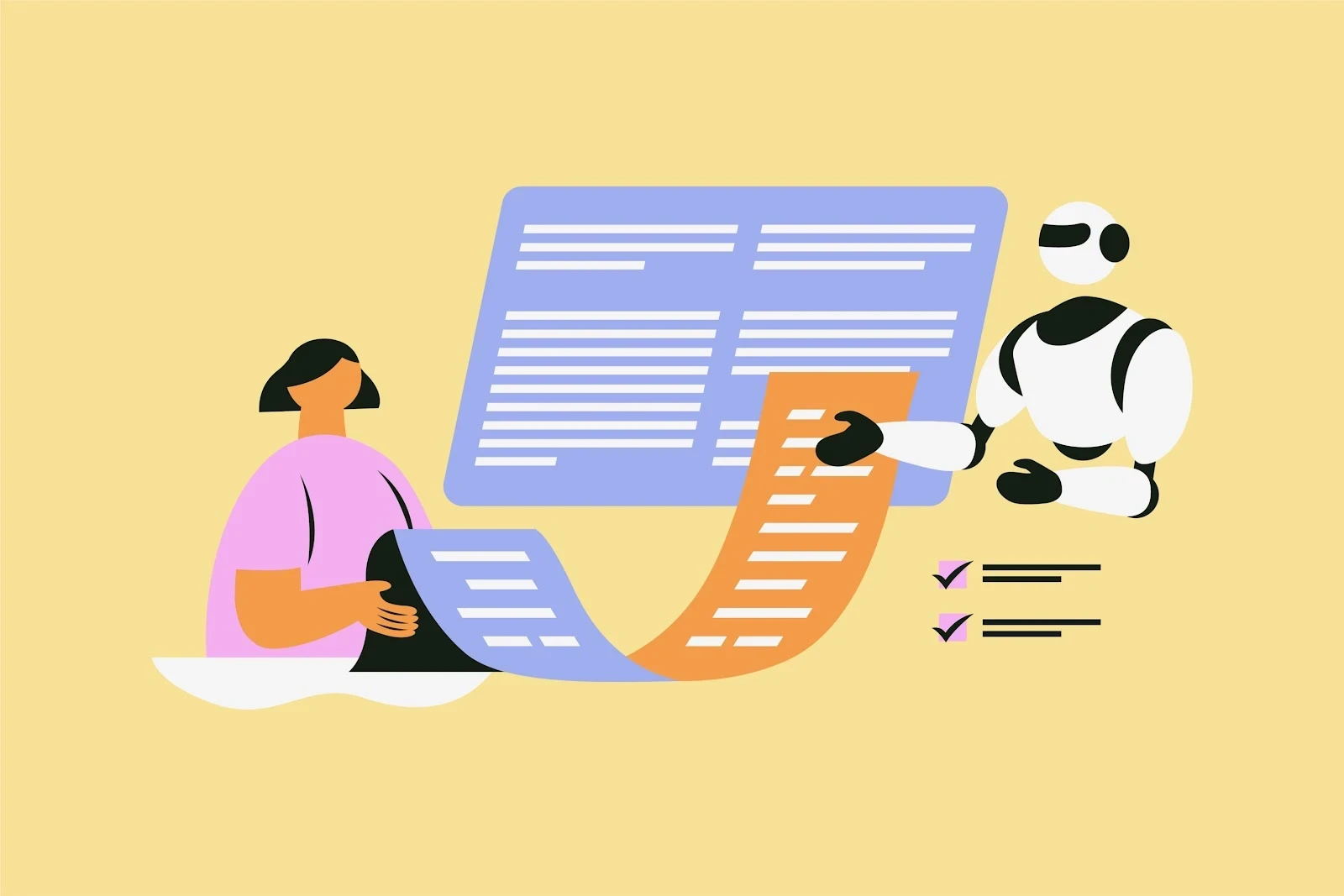Waiting days for feedback doesn’t help students improve. They need clear, specific insights right away. That’s where artificial intelligence (AI) steps in.
AI-powered tools give instant feedback on essays, coding assignments, and handwritten work. They highlight mistakes, suggest improvements, and relieve teachers of their grading load so they can focus on improving learning outcomes.
But AI isn’t just a time-saver. It helps students learn faster by spotting patterns and giving personalized feedback. Instead of guessing where they went wrong, students get real-time corrections and a clear way to improve their outputs.
In this guide, we’ll explain how AI feedback works, discuss the best available tools, and teach you how to use them effectively.
What Is AI Feedback?
AI feedback gives students instant, specific responses to their work. Instead of waiting for a teacher to grade an assignment, AI scans the submission, spots mistakes, and suggests fixes right away.
AI models create an inclusive learning environment by giving all students constructive criticism. It helps with essays, math problems, and coding projects by showing mistakes and how to fix them while the material is still fresh.
Artificial intelligence provides detailed feedback by explaining why student answers are correct or incorrect. Using machine learning and natural language processing (NLP), AI evaluates responses, checks accuracy, and offers constructive suggestions for improvement.
How Does AI Feedback Work?
AI feedback tools use three technologies:
Natural language processing (NLP): Analyzes writing for grammar, clarity, and structure. AI tools like ExamAi highlight weak areas and suggest improvements.
Machine learning algorithms: Track student progress and recognize learning patterns. AI predicts where students might struggle and provides real-time support.
Data analytics: Instead of vague comments, AI gives clear insights into strengths and areas for improvement. Teachers can adjust lessons, and students can focus on improving their work.
With AI-driven grading, every response is evaluated using the same criteria, ensuring fairness and consistency.
Now that we understand how AI processes student responses, let’s look at the best tools that provide AI-powered feedback.
Top AI Tools for Student Feedback
AI grading tools help students understand their mistakes faster and give teachers more time to focus on improving their teaching strategies. Instead of waiting days or weeks for feedback, students get instant corrections and meaningful feedback. For teachers, AI speeds up grading, guarantees consistency, and provides detailed insights into class performance.
Some tools focus on grading essays, while others evaluate coding assignments, handwritten responses, or multiple-choice exams. These platforms use AI-driven analytics to provide clearer insights into a student's specific performance.
ExamAi
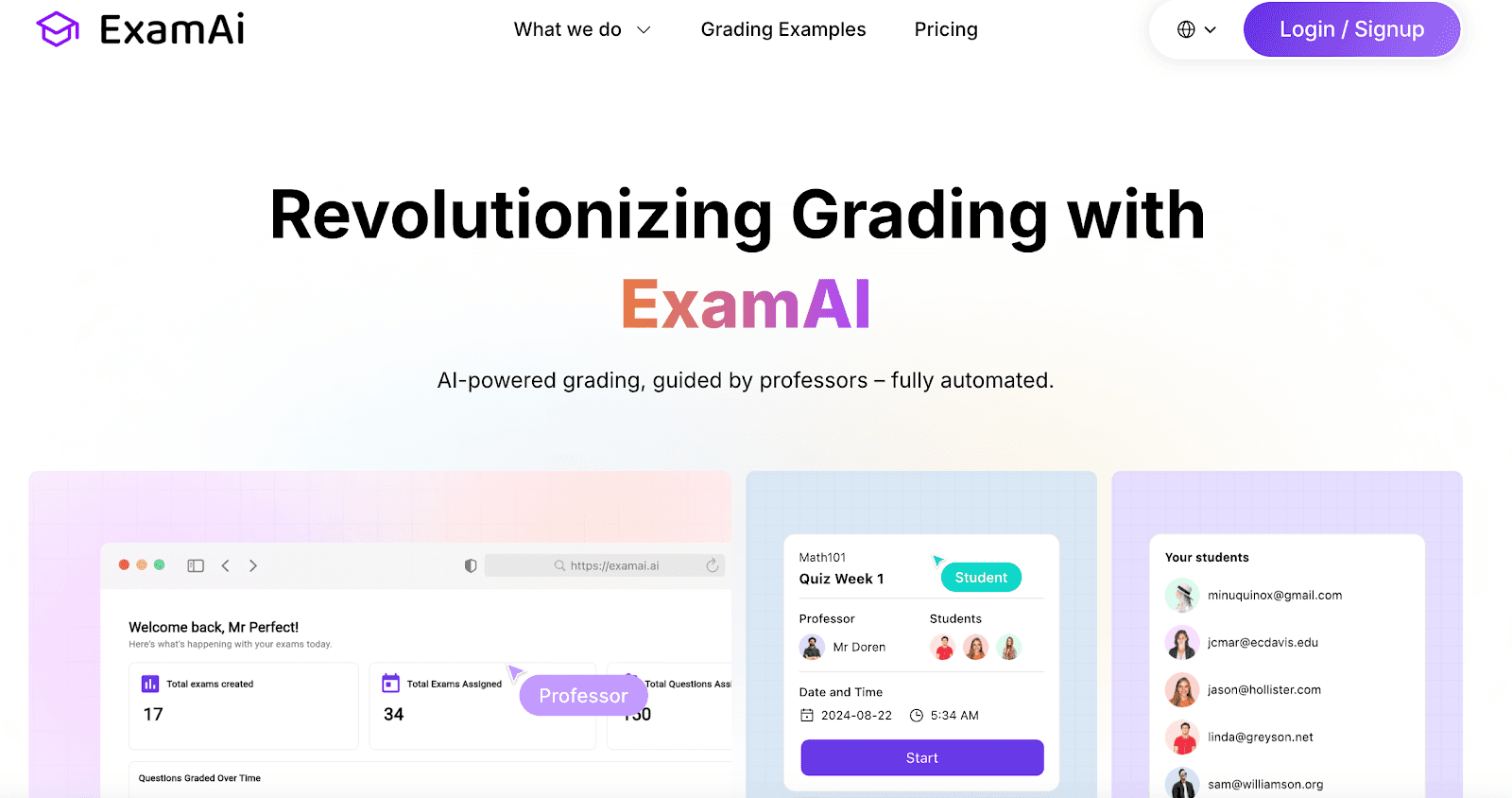
Grading is one of the biggest challenges for professors. It takes hours to review exams, handwritten responses, and essays. ExamAi automates the entire feedback process, making grading faster and feedback more useful.
How ExamAi Helps Teachers:
Create exams easily: Enter questions manually or let AI generate them from class notes, past exams, or general knowledge sources.
Grade handwritten responses with AI: Upload scanned exams, and ExamAi evaluates them automatically.
Provide instant student feedback: Every answer includes AI-generated explanations and improvement tips.
Track student growth: ExamAi’s analytics portal highlights class trends and common mistakes.
Sync grades with LMS platforms: Export grades to Canvas, with Blackboard Learn integration coming soon.
How ExamAi Helps Students:
Receive grades instantly: No more waiting for weeks to know how you did on an assignment or exam.
Understand mistakes right away: AI-generated feedback explains what went wrong and how to improve.
Learn from every test: Feedback turns exams into learning experiences to improve a student's learning journey.
ExamAi also helps students learn from their mistakes, gives teachers valuable insights, and ensures grading is fair, efficient, and consistent.
Gradescope
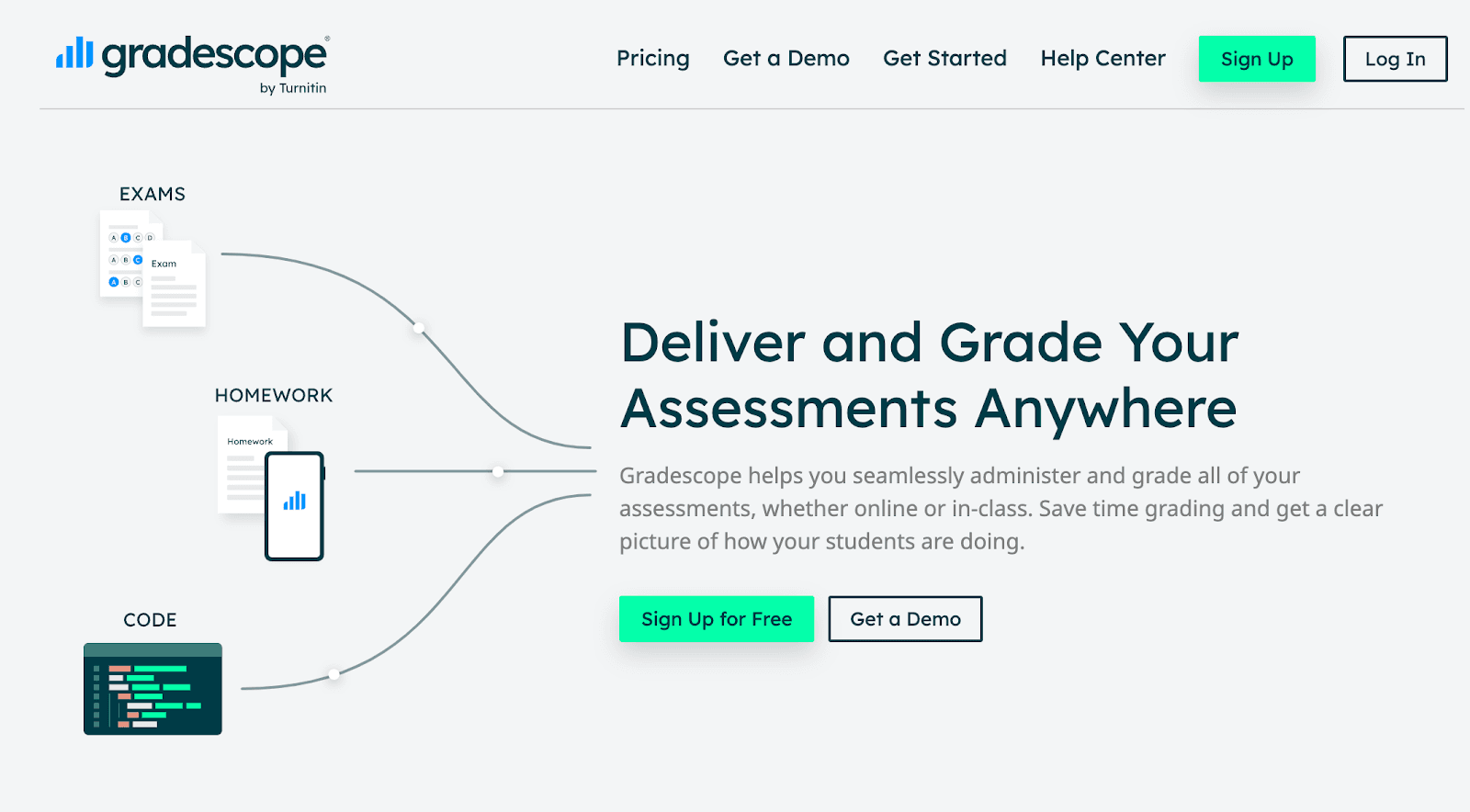
Source: Gradescope.com
Gradescope provides AI-assisted grading, mainly for multiple-choice, written exams, and coding assignments. The platform helps teachers speed up the grading process by grouping similar answers, making grading more efficient.
How Gradescope Works:
Groups similar answers together: AI detects patterns in student responses and helps teachers grade faster.
Uses dynamic rubrics: Adjust grading criteria while reviewing assignments to maintain consistency.
Supports programming assessments: Autogrades coding assignments in different programming languages.
Syncs with learning management systems (LMS) platforms: Exports scores and integrates with learning management systems.
Gradescope’s AI-assisted grading works well for large classrooms, where teachers handle a high volume of exams.
EssayGrader
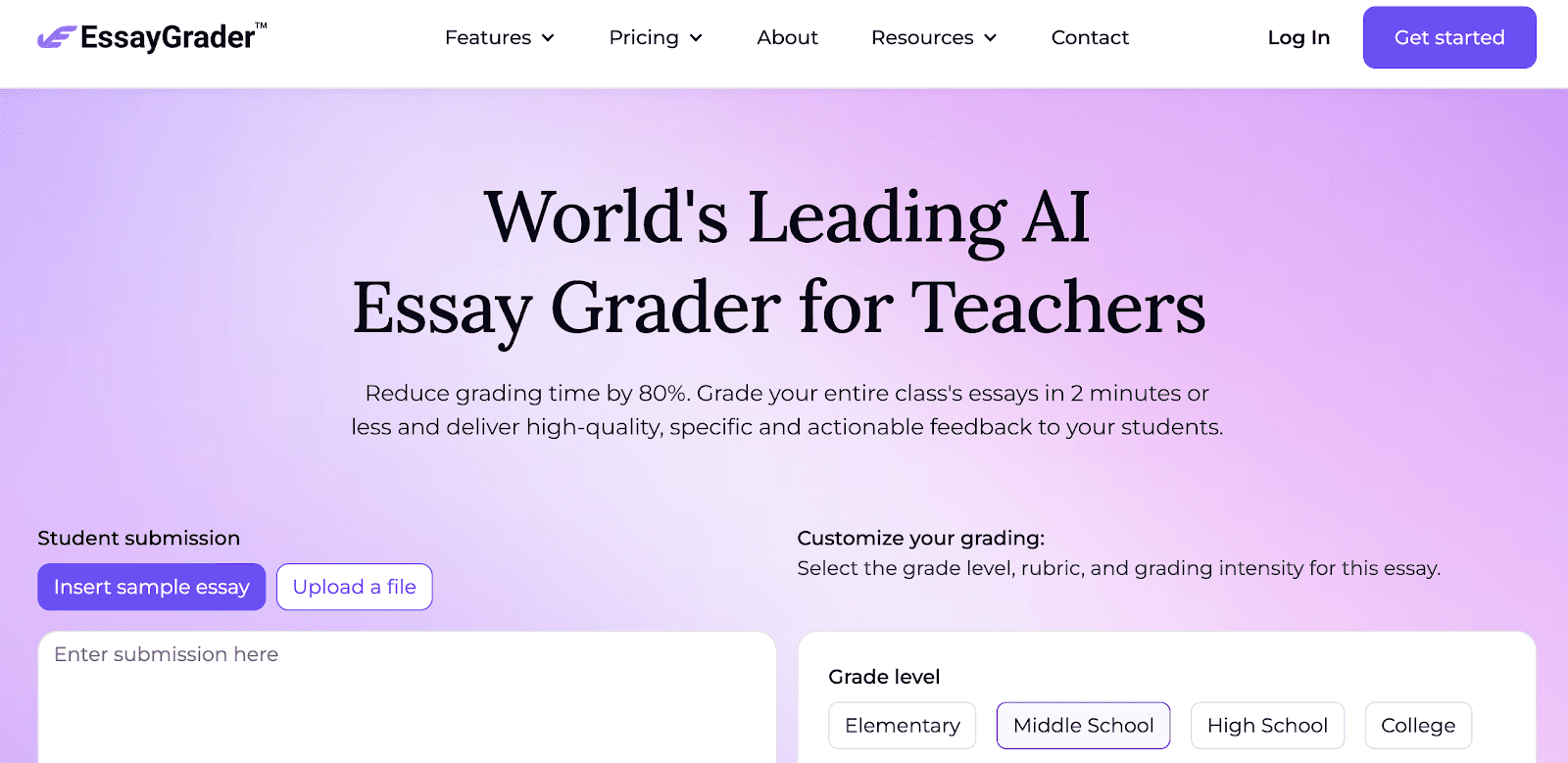
Source: Essaygrader.com
EssayGrader automates essay evaluation, checking grammar, structure, and argument strength. While it speeds up grading, it lacks the personalized feedback and in-depth analytics that ExamAi provides.e
How EssayGrader Works:
Grades essays automatically: AI analyzes grammar, clarity, and argument organization.
Custom grading rubrics: Teachers set their grading criteria for AI-assisted evaluations.
Summarizes essays: AI provides a quick breakdown of each essay’s strengths and weaknesses.
Detects AI-written content: Helps teachers determine whether students used AI to generate their work.
EssayGrader helps students understand how to improve their writing skills, but AI cannot replace detailed teacher feedback for complex writing tasks.
What Are the Benefits of AI-Generated Feedback?
Feedback should help students learn, not just point out their mistakes. However, when feedback is delayed or lacks detail, it can be frustrating and unhelpful. AI addresses this by delivering fast, clear, and actionable feedback.
Here’s how AI feedback makes learning more effective for teachers and students.
Personalized Learning and Valuable Feedback
Every student learns differently. AI adjusts feedback based on individual performance, offering detailed explanations where needed and more advanced insights for high-achieving students.
AI ensures fair and unbiased grading, using consistent evaluation criteria for all students. Unlike human grading, which can be subjective, AI applies the same standards to every assignment, reducing potential grading discrepancies.
Instant and Actionable Insights
Waiting for grades delays progress. AI eliminates this by providing immediate feedback, so students correct mistakes in real time instead of repeating them on future assignments.
When students receive feedback within seconds of submission, they engage more actively in learning, revising their work, and improving before moving on to new topics.
More Engaging and Interactive Learning
AI turns grading into a learning experience. Instead of just marking an answer wrong, AI explains errors, suggests fixes, and provides additional resources to reinforce learning.
Some AI tools offer practice exercises and additional resources to reinforce learning. Instead of just marking an answer incorrect, AI helps students understand the reasoning behind the correct answer and encourages them to apply that knowledge for continuous improvement.
Best Practices for Using AI Feedback in Learning
AI feedback works best when teachers and students use it with purpose. It can’t replace human instruction, but it can speed up grading and help students see where they need to improve.
Here’s how to get the most out of it.
Combine AI with Teacher Feedback
AI can catch grammatical errors, grade multiple-choice tests, and highlight weak areas in essays, but it can’t explain complex ideas the way a teacher can. Students still need real conversations and detailed explanations to understand why they made a mistake.
One way to balance AI and teacher feedback is to let AI handle the first round of grading, and then have teachers review and add personal insights. AI points out technical errors, and teachers focus on bigger-picture thinking, creativity, and problem-solving.
Encourage Students to Apply AI Feedback
Instant feedback only helps if students use it. If they see a mistake, they should take time to understand what went wrong and fix it. Skimming feedback and moving on won’t lead to real improvement.
Teachers can help by having students track their common mistakes and set goals to fix them. If a student struggles with weak thesis statements, they should practice writing stronger ones. If their math solutions are messy, they should work on showing clearer steps.
AI can highlight the problem, but students have to put in the effort to improve their output.
Check AI Feedback for Accuracy and Bias
AI tools aren't perfect. Sometimes they misread an answer, especially in creative or open-ended work. Teachers should double-check AI feedback to make sure it’s fair and accurate.
Students should also speak up if they think the AI made a mistake. If an AI grader marks something wrong but they believe it’s right, they should be able to ask their teacher to review it.
Keep Student Data Private
AI tools process a lot of student data to give personalized feedback, but privacy needs to come first. Schools should only use AI platforms that follow student privacy laws like the Family Educational Rights and Privacy Act (FERPA) and the General Data Protection Regulation (GDPR).
Students also have a right to know how their data is being used. If an AI tool tracks their performance, they should understand what information is collected, who sees it, and how long it’s stored.
Get Personalized Student Feedback with ExamAi
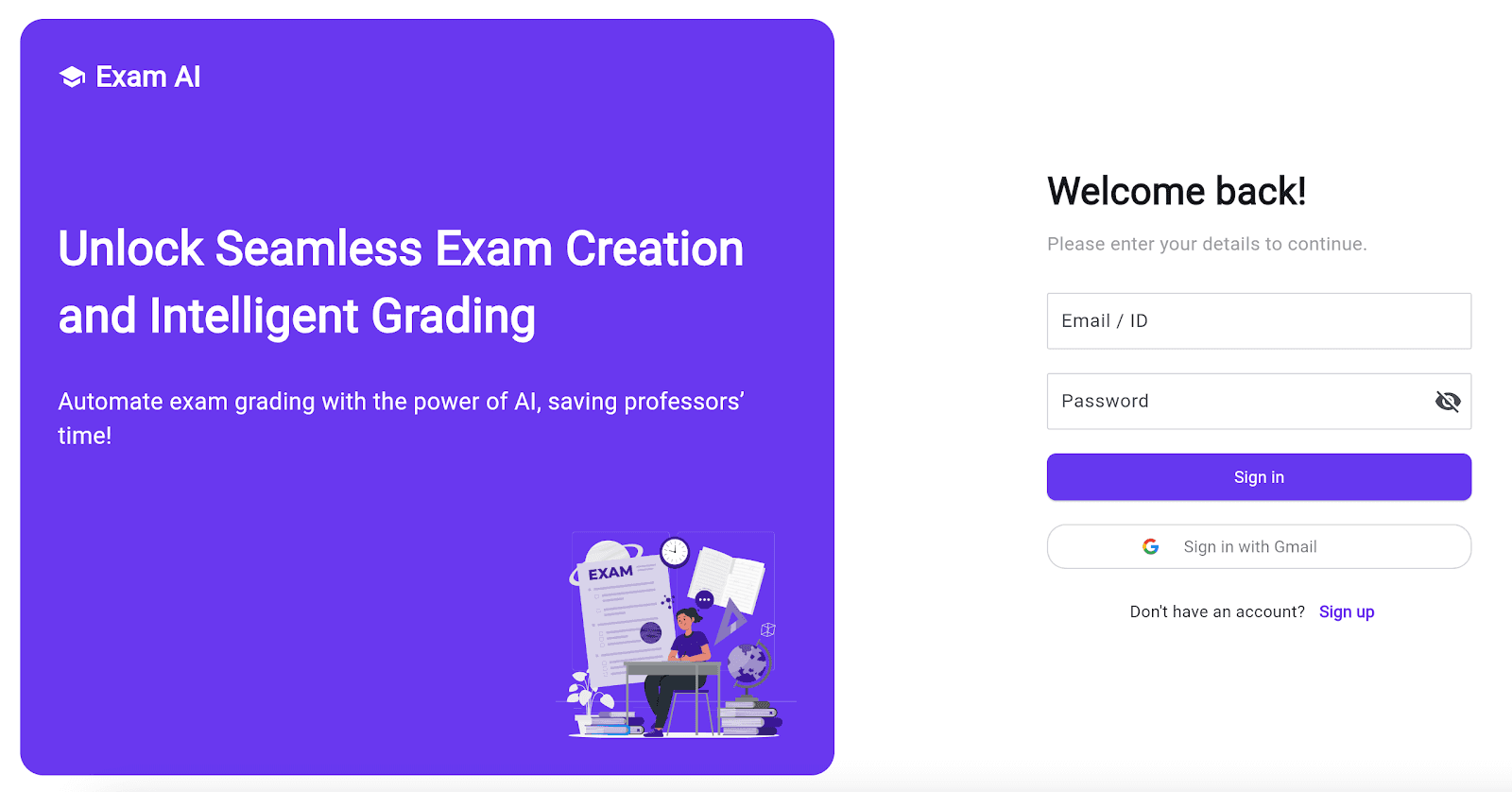
AI feedback helps students improve faster by giving them instant, clear insights instead of making them wait for grades. It also makes grading easier for teachers, so they can focus more on teaching instead of spending hours reviewing assignments.
ExamAi does both. It provides instant grading for essays, handwritten responses, coding assignments, and multiple-choice questions.
Professors can generate exams using AI, grade handwritten work by uploading scans, and track student progress with built-in analytics. Students receive immediate scores with step-by-step explanations, helping them understand mistakes and improve quickly.
ExamAi makes grading faster, fairer, and more effective. Try the free plan and see how AI-powered feedback enhances learning.
FAQs About AI Feedback for Students
How can AI provide feedback to students?
AI analyzes student work using natural language processing and machine learning. It checks for grammar, structure, and accuracy, then generates feedback based on patterns and predefined grading criteria. Some AI tools also provide explanations and suggest ways to improve a student's performance.
What is the AI that writes feedback?
ExamAi is one of the best AI for grading that provides instant and effective feedback on essays, coding assignments, and handwritten exams.
How can we give feedback in AI?
AI gives feedback by analyzing student work and applying grading criteria to highlight mistakes and suggest improvements. Teachers can customize AI-generated feedback by setting specific rubrics, defining learning goals, and adjusting responses to fit the assignment.
Some AI tools let teachers add manual comments alongside automated feedback to provide more context and clarity.
What are some examples of feedback for students?
AI feedback corrects grammar, suggests clearer phrasing, and improves structure in writing assignments. In math and coding, AI identifies errors, explains miscalculations, and provides step-by-step solutions.
For general assessments, AI summarizes strengths, points out recurring mistakes, and recommends study materials. Effective AI feedback also explains why an answer is incorrect and how to improve it.

